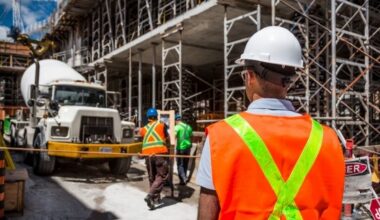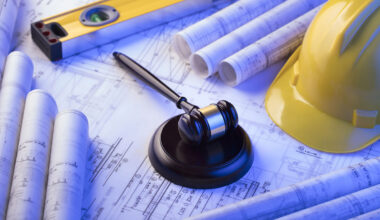Fire damage can be frightening in a variety of ways. Aside from the obvious danger, there is also the negative impact of smoke inhalation, structural damage, and impending repair bills. Wouldn’t you rather avoid any kind of damage than deal with the aftermath? This post will discuss fire damage repair, clean-up, and restoration services. So, whether you’ve been in a small or large fire or you simply want to be prepared, here are some resources for you!
What Does Fire Damage Mean?
Fire damage is the physical damage done to a property as a result of burning. This damage could be caused directly by the flames or indirectly by the smoke and other corrosive substances emitted by the fire. This damage is one of the types of insurance coverage available in property insurance.
Fire Damage Restoration
When fires burn synthetic materials, they make corrosive byproducts that, along with soot and smoke, damage surfaces and furniture in a big way. You probably haven’t had a big fire in your home. The process of repairing and restoring damage caused by fire, smoke, and corrosive byproducts is called “fire damage restoration.”
This process involves getting rid of corrosion caused by soot and other byproducts, as well as odors from surfaces, furniture, and smoke. Fire damage restoration is a lengthy process that includes the following steps:
How to Repair Fire Damage
Before your fire damage restoration contractor can even enter the property to assess the extent of the fire damage, they must first obtain permission from a licensing authority. A contractor may otherwise enter an unsafe situation and risk injury.
After they’ve been permitted to get into the property, this is how fire damage restoration usually goes:
#1. Damage evaluation
After determining that the property is safe to enter, a fire damage contractor must conduct an assessment of the damage caused by the fire and subsequent water intrusion. This usually entails determining how far the flames and smoke have penetrated the structure and how extensive any cleanup will be.
#2. Property security and debris removal
Following the assessment, the next step is to secure the property. This includes erecting fencing around the property, clearing debris around the perimeter, boarding up openings in the structure, and tarping or sealing off sections of the roof to protect what’s left of the property from the elements.
#3. Water mitigation, demolition, and drying out
During this stage, the goal is to remove water and dry out the property to prevent further mold or corrosion damage. Personal belongings will be removed from the structure’s interior. As needed, damaged drywall, flooring, and other materials will be removed down to the studs.
#4. Cleanup and smoke removal
Clean-up is the most time-consuming aspect of a fire damage restoration job. This step usually requires a lot of hard work by hand to get the smoke and soot off the inside and outside surfaces. In many cases, every square inch of the affected area must be cleaned. After everything has been cleaned well, deodorizing agents are used to get rid of any lingering smoke smells.
#5. Construction & Restoration
The last step in getting the property back to how it was before the fire is to repair or rebuild any fire damage. During the first look at a building after a fire, some parts may be destroyed and need to be taken down and replaced. This could include rebuilding and replacing the roof, replacing the electrical, replacing the drywall and painting it, replacing the flooring materials, replacing the countertops and fixtures inside, and so on, to get the property back to how it was before the fire.
Fire Damage Restoration Services
This list of the best fire damage restoration services is a good place to start your search for a qualified, professional fire damage restoration company, but before making a final decision, homeowners should educate themselves on what to look for during the selection process.
Top Choices
The best fire damage restoration services were chosen based on a number of factors, such as customer service, availability, experience with fire damage restoration, and the number of other restoration services they offered.
#1. ServiceMaster Restore
When it comes to restoring a home or business to its former glory, ServiceMaster Restore’s prompt service and tailored restoration process, carried out by skilled technicians, make all the difference.
#2. COIT Cleaning & Restoration
Technicians at COIT Cleaning & Restoration are trained and certified to high standards, which gives customers confidence in the restoration work they get. When an emergency occurs, no one wants inexperienced workers to exacerbate the situation.
#3. SERVPRO
Because the company has 1,900 locations, homeowners all over North America can take advantage of SERVPRO’s restoration skills. SERVPRO began in 1967 as a family-owned painting business and has come a long way since then. At the moment, the franchise has more than 1,900 locations in all 50 states, Washington, D.C., and Canada. Each location offers different professional fire damage restoration services and certifications.
#4. BELFOR Property Restoration
BELFOR Property Restoration’s unique repair services can help fire-damaged homeowners fix their homes and keep them from having more problems. In 39 states, BELFOR Property Restoration customers can schedule services for fire damage restoration, mold removal, water damage restoration, and storm damage restoration.
#5. Paul Davis
Paul Davis has over 300 locations across the United States and provides cleanup and restoration services for fire, water, mold, and other disasters. Furthermore, Paul Davis offers emergency help 24 hours a day, seven days a week. Its services include boarding up, stabilizing structures, getting rid of smoke smells, cleaning up, cleaning the air, and rebuilding.
Fire Damage Repair
Fire damage restoration is a multi-step process best left to IICRC-trained fire, soot, and smoke damage repair companies. After a fire, there will be smoke damage, soot residue, and even water damage, which may cause additional damage to your home or business if left unattended for an extended period of time.
If left untreated, water damage can lead to mold, which causes additional issues. By bringing in a professional as soon as possible to assess the damage, the repair process will be faster and less expensive.
What Steps Are Involved in the Fire Damage Repair Process?
Repair technicians show up almost right away after a fire damages your property. This takes the pressure off of you to fix your home after the fire. Many technicians offer emergency response services and will respond quickly after receiving your call. When they arrive, they’ll start the repair process, which includes using restoration techniques that have been approved by the industry.
Step 1: Initial Inspection
After the fire has been put out, a qualified inspector will look at the damage and decide what needs to be fixed, including structural damage. Depending on how badly your home was damaged, you may need to hire more than one professional, such as a roofer, carpenter, plumber, carpet installer, or others.
Step 2: Prevention and Safety
After looking at the fire damage and figuring out how bad it is, the fire restoration experts will seal off dangerous areas to keep people from getting hurt or causing more damage. By closing off these areas, you also protect yourself from liability.
Step 3: Remove Soot and Debris
After a fire, your home will be covered in soot and the smoke smell will be overwhelming. Firefighters work quickly to remove soot and smoke, as well as other debris. Using air-scrubbing technology, they will scrub the walls and ceilings of soot and apply deodorization products to handle odor removal during this initial cleanup process.
Step 4: Water Removal and Sanitation
Once the initial mess, smoke smell, and soot have been cleaned up and it is safe for the technicians to move on, they will remove any standing water and dry out the damaged area.
Step 5: Repair Damage
The final step in restoration is to repair the damage done to your property. This step entails rebuilding the physical structure of your home.
Fire Damage Clean Up
If a fire breaks out in your home or property, there are a few things you should know and remember to help with cleanup after the fire is out. In this section, we will discuss how to clean up fire damage and what you should know before beginning remediation.
These tips for fire damage clean-up will assist you in protecting your family, property, and peace of mind as you work to restore your property and life to its pre-fire conditions.
What Is Involved In The Fire Damage Clean-Up?
Clean-up after a fire is a difficult, multi-step process that often involves fixing water damage, fire damage, and smoke damage.
Depending on how bad the fire was and how hot it got, the home or business may have structural damage or need emergency board-up service to protect it from the weather.
Fire damage cleanup will include removing debris, removing any standing water, repairing any water damage, removing all smoke particles and soot accumulation in the home and vents, removing and replacing damaged contents, irradiating the smoke smell, and ensuring the air quality in the home is excellent.
All of these cleanup jobs will take a lot of time, work, and skill, as well as an understanding of the health and safety risks that come with them. Remember that you do not have to do the cleanup by yourself.
Fire damage restoration services with experience and knowledge of fire can help you through the whole process, handle and finish the most difficult and dangerous parts of the cleanup, and help you with every step of the cleanup.
What are the forms of fire damages?
It can be classified into three types. The first type of damage is caused by flames, the second by smoke, and the third by substances and the act of extinguishing the fire.
What does fire damage mean?
It simply refers to fire damage to a building or other object.
What causes fire damage?
Actually, the resulting damage is the result of a combination of smoke, heat, and soot, all of which can cause a variety of problems that must be addressed.
How do you fix fire damage?
While each fire scenario is unique and necessitates a unique battle plan, some steps in our restoration process are fairly consistent.
- Determine the extent of the damage.
- Isolate dangerous areas.
- Remove the water and thoroughly dry the area.
- Remove any soot or smoke residue.
- Clean and sanitize.
- Restoration of damage
What are the 4 types of fires?
Let’s take a closer look at each of the five types of fires.
- Ordinary Fires: Class A Fires
- Liquids & Gases: Class B Fires
- Electrical Fires: Class C Fires
- Metallic Fires: Class D Fires
- Grease Fires or Cooking Fires: Class K Fires
What is the most damaging type of fire?
Class C fires are those caused by flammable gases such as butane and propane and are arguably the most dangerous due to their proclivity to explode.
What are the 6 types of fires?
The six types and classes of fire, as well as how to combat them:
- Class A fires are those that involve solids: (Solids)
- Class B fires are those that involve liquids.
- Fires caused by electricity
- Class C (Gases) Fires are those that involve gases.
- Class D (Metals)
- Class F (Cooking Fats & Oils)
Conclusion
The final stage of fire damage restoration is repair work to return your home to its original condition. Reconstruction of damaged structural elements, remodeling, painting, and the installation of new drywall, flooring, or carpeting are all part of this. Some companies that fix this damage offer full reconstruction services, while others may only do certain repairs and refer you to someone who can do the rest of the repairs better.
Frequently Asked Questions
What are the effects of fires?
Transportation, communications, power and gas services, and water supply can all be disrupted by wildfires. They also cause air pollution and the loss of property, crops, resources, animals, and people.
How did fire affect humans?
The ability to control fire altered the course of human evolution, allowing our forefathers to stay warm, cook food, ward off predators, and venture into harsh climates. It also had significant social and behavioral implications, encouraging people to gather and stay up late.
What is fire essay?
Fire is a chemical reaction that produces heat and light. It exemplifies the chemical process of oxidation. Fire is useful, but it is also very dangerous because it can burn down houses, trees, and many other things. Forest fires are extremely dangerous. They can devastate a large area in a matter of minutes.
Related Articles:
- Fireplace Inspection: How Do You Inspect a Fireplace
- PROPERTY DAMAGE LAWYER: When You Need a Property Damage Lawyer
- CONSTRUCTION INJURY LAWYER
- WATER DAMAGE CEILING REPAIR: How to Fix a Damaged Ceiling
- Does Renters Insurance Cover Water Damage?
- National Union Fire Insurance Review: Products And Mode Of Operation






